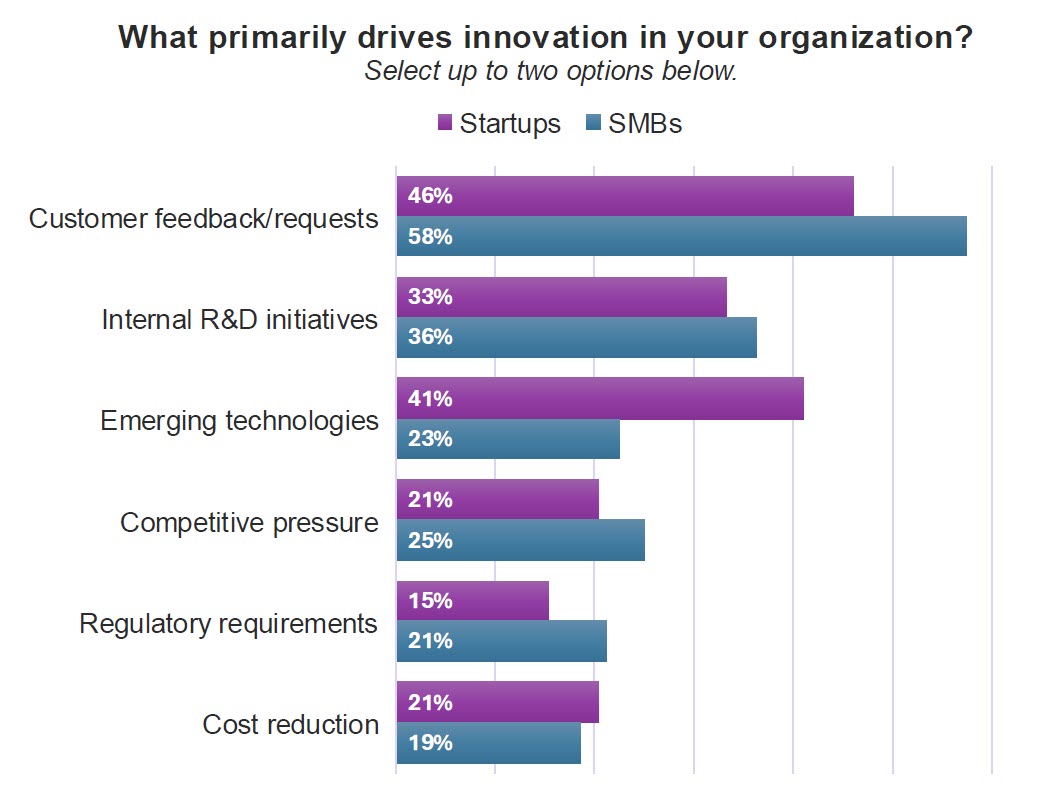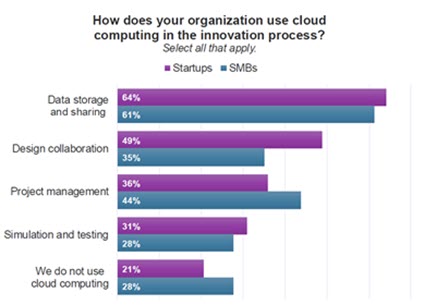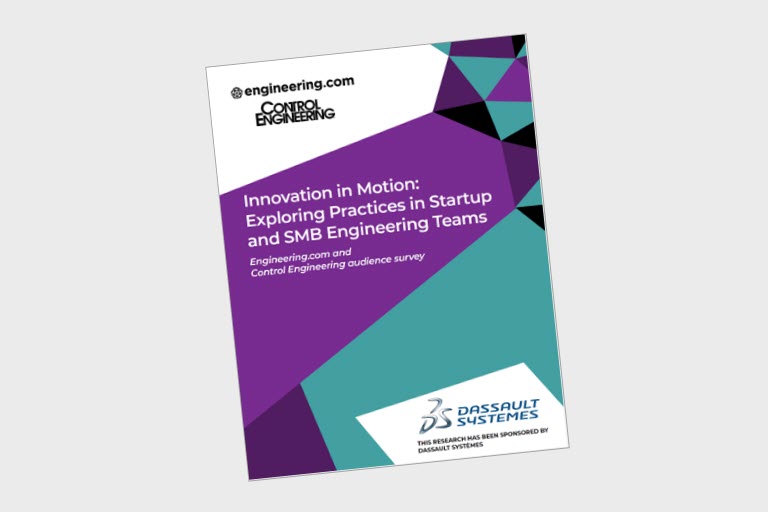Every engineering team—whether a two-person startup chasing its first prototype or a 1,000-person SMB expanding their product line—faces the same question: where does innovation really come from?
Is it born from listening to customers? Sparked by bold bets on transformative technologies? Or shaped by the discipline of R&D?
Our recent survey of startups and SMB engineering teams uncovered surprising answers [Read post]. The data paints a vivid picture of how smaller companies approach innovation today, where they hit roadblocks, and what technologies they are betting on for the coming years. And while their playbooks differ, their ambition is clear: to deliver products that resonate with customers, reach the market on time, and drive sustainable growth for their company.
Here’s the story of innovation, told through the survey results—and why it matters for your team.
Who Really Drives Innovation?
Across the full audience, customer feedback topped the list as the leading driver of innovation (53%). SMBs leaned even harder into this approach (58%), doubling down on customer-driven development.

Startups, however, diverged. While customer input remained important (46%), emerging technologies (41%) surpassed internal R&D (33%) as their next major driver.
👉 Why it matters: If you are a startup, this finding validates a natural tendency to leap toward transformative technologies—but it also raises a question: are you listening enough to customers? If you are in an SMB, customer focus is your strength—but could it be narrowing your field of vision when disruptive technologies emerge?
The Roadblock Between Design and Manufacturing
Turning designs into manufactured products is where many teams stumble. The survey revealed cost constraints (43%) and communication breakdowns between design and manufacturing (39%) as the top obstacles overall.
But the pain points split by size:
- Startups struggle with material selection and availability (51%), often due to lean supply chains.
- SMBs face sharper cost constraints (48%), reflecting the pressures of expanding product lines.
- Communication issues are universal, dragging down both groups (31% startups, 40% SMBs).
👉 Why it matters: If your team feels slowed down here, you are not alone. For startups, finding the right materials may be as critical as nailing the design itself. For SMBs, controlling costs without stifling innovation is the balancing act. And for everyone, closing the communication gap between design and manufacturing is often the quickest win.
Cloud: The Silent Enabler
Cloud computing is quietly reshaping the innovation process. 61% of respondents use the cloud for data storage and sharing, and 40% each for design collaboration and project management.

The split tells an interesting story:
- Startups lean on cloud for design collaboration (49% vs. 35% of SMBs)—reflecting agile, cloud-first workflows.
- SMBs lean on it for project management (44% vs. 36% of startups)—a natural fit for larger, more structured teams.
- Yet nearly one quarter of both groups don’t use the cloud for innovation at all.
👉 Why it matters: For startups and SMBs alike, the cloud is more than a tool—it’s a way to stay focused on core innovation. By leveraging cloud infrastructure and solutions, teams gain flexibility and free themselves from the burden of maintaining IT systems that rarely provide competitive differentiation. The result: more time and resources spent on designing and delivering products customers love.
The Bet on AI
When asked about planned technology investments, the top five areas across the audience were:
- Artificial intelligence and machine learning (58%)
- Advanced robotics and automation (35%)
- Cybersecurity (34%)
- Additive manufacturing/3D printing (32%)
- Cloud and edge computing (32%)
Startups stand out: 69% plan to invest in AI/ML, compared to 51% of SMBs. Startups are also more aggressive in automation and sustainability tech. SMBs, by contrast, show broader but shallower investments across more categories.
👉 Why it matters: This signals a divergence in strategy. Startups are going all-in on transformative technologies, betting they’ll gain an edge. SMBs are hedging across more areas, prioritizing resilience. The real question is: which approach will prove more competitive over the coming years?
What This Means for You
From the spark of an idea to the hurdles of production, from cloud-enabled workflows to bold bets on AI, smaller engineering teams are navigating innovation in very different ways.
The takeaway is clear: there is no single playbook. But the choices you make today—whether prioritizing customers, leaning into new tech, or fixing the cracks between design and manufacturing—will shape your ability to compete tomorrow.
So where does your team fit into this story?
📄 Discover all the findings of this survey and benchmark your own innovation playbook. Download the full report.

